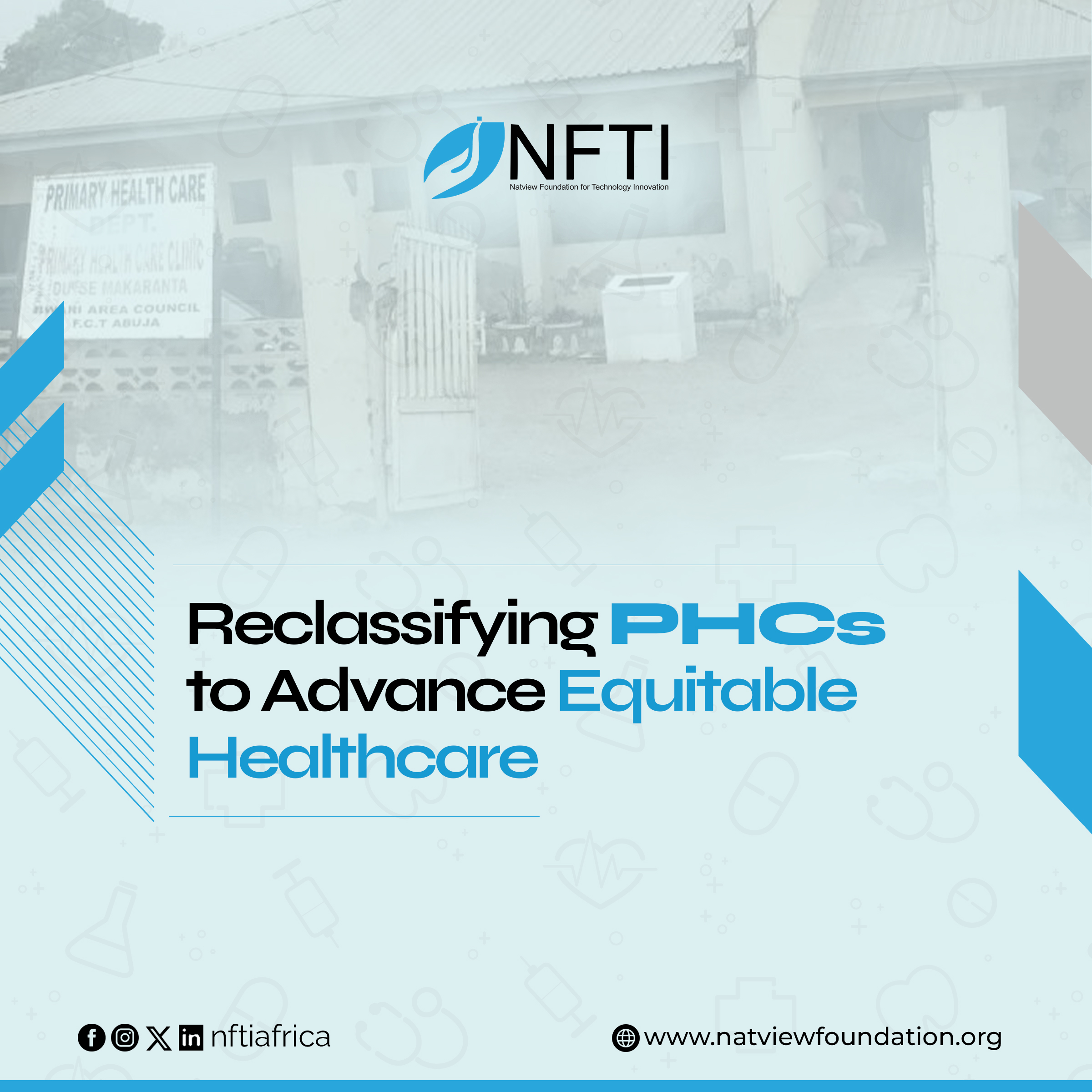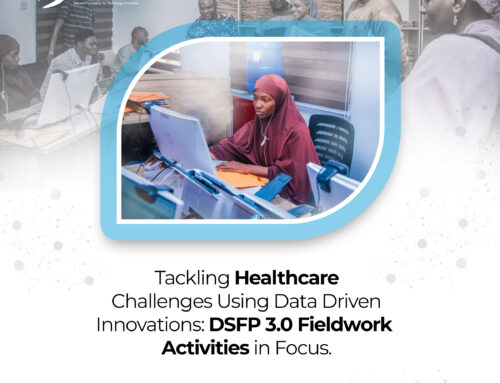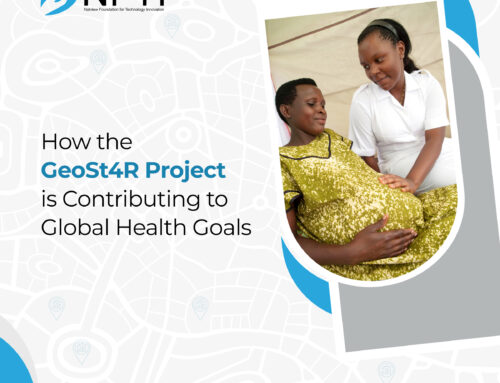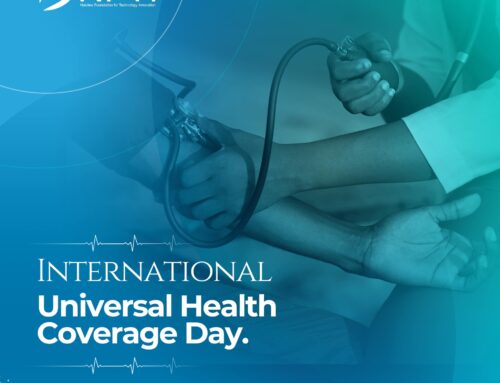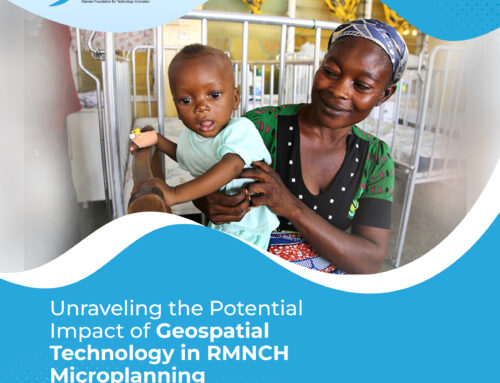Ever wondered why some healthcare facilities seem more equipped to meet community needs than others? The answer often lies in how these facilities are categorized and managed. To improve healthcare service delivery and promote equitable access to primary healthcare services across Kaduna State, the Kaduna State Primary Healthcare Board, the Kaduna State Bureau of Statistics, and the Natview Foundation for Technology Innovation (NFTI) are working together on a health facility reclassification initiative. Reclassification of facilities involves far more than a simple reorganization of healthcare organizations. Revision and refinement of healthcare facility categorization is a purposeful and systematic undertaking aimed at harmonizing them with changing standards, population demands, and service delivery models. The overarching objective is to cultivate a healthcare infrastructure that is consistent, cohesive, and adaptable to address the varied healthcare requirements of communities.
In public health, the classification of healthcare facilities plays an important role in shaping service delivery, resource allocation, and overall health outcomes within a community. This article provides an in-depth analysis of the complex process of facility reclassification. The primary objective of this ambitious project is to reclassify all public primary healthcare facilities, thereby establishing a more refined classification system that aligns with Kaduna State’s evolving healthcare standards. By implementing a new business rule classification system, the initiative seeks to categorize health facilities based on their infrastructure, capacity, and scope of services, ensuring that each facility is appropriately classified to meet the diverse healthcare needs of the population.
Central to the project’s objectives is the development of a uniform platform for updating health facility information. This platform will serve as a centralized repository of comprehensive health facility data, providing stakeholders with real-time insights into the healthcare landscape. The initiative aims to empower stakeholders with the information they need to make informed decisions and drive meaningful change by enhancing data accuracy, accessibility and transparency in primary healthcare facility management.
Reclassification of healthcare facilities is crucial, according to case studies from all across the globe. Rural health clinics (RHCs) in Wisconsin, USA, are vital in delivering healthcare services to people in rural areas that lack sufficient access to medical care. However, accurately classifying these facilities can be challenging due to the unique nature of their operations. To ensure that RHCs receive appropriate reimbursement for the services they provide, Wisconsin Medicaid implemented the ‘Rural Health Clinic Reclassification and Adjustment of Trial Balance Expenses’ process years ago. Accurately documenting operating costs and overhead expenses helps RHCs ensure that they receive fair and equitable reimbursement for their services, enabling them to continue serving their communities effectively.
Also, the September 2015 publication by the Centers for Medicare & Medicaid Services (CMS) detailed hospital reclassifications within the Medicare Fee-For-Service Program, focusing on urban to rural and geographic reclassifications. Hospitals in urban areas could apply for rural status based on specific criteria, whereas those seeking wage index competitiveness with neighboring areas may opt for geographic reclassification. Applications had to adhere to proximity and wage comparison requirements, with decisions made by the Medicare Geographic Classification Review Board (MGCRB) within a specified timeframe. Understanding application processes, compliance criteria, and appeal options was crucial for hospitals aiming to optimize reimbursement under Medicare.
Conducting a comprehensive needs assessment involves evaluating population demographics, epidemiological data, healthcare utilization patterns, and existing facility infrastructure to identify gaps and priorities in healthcare service delivery. Engaging stakeholders, including healthcare providers, policymakers, community leaders, and patient advocates, ensures that facility reclassification efforts reflect the diverse perspectives and priorities of key stakeholders. Utilizing health information systems, demographic surveys, facility audits, and other data sources, healthcare systems can analyze quantitative and qualitative data to inform facility reclassification decisions and resource allocation strategies. Developing standardized criteria and guidelines for facility classification, such as infrastructure requirements, staffing ratios, service capabilities, and geographic accessibility, helps maintain consistency and transparency in the reclassification process.
The methodology employed in this initiative involves a comprehensive approach to data gathering and compilation, drawing upon multiple sources within the health data ecosystem. These sources provide valuable insights into various aspects of the healthcare system in Kaduna State.
Central to the project’s objectives is the development of a uniform platform for updating health facility information. This platform will serve as a centralized repository of comprehensive health facility data, providing stakeholders with real-time insights into the healthcare landscape.
One key source of data is the Health Facility Analytics (HEFA) platform, which offers detailed information on health facility infrastructure, services offered, staffing, and patient demographics. Stakeholders gain a deeper understanding of the health sector’s dynamics, facilitating more informed decision-making and strategic planning by leveraging the HEFA platform. Another essential data source is the Human Resource for Health Management Information System (HRHMIS), which contains valuable data related to the healthcare workforce. This includes information on staffing levels, qualifications, and distribution, providing insights into workforce capacity and distribution across the state’s public primary healthcare facilities.
When it comes to evaluating healthcare facilities’ service quality, Integrated Supportive Supervision (ISS) visits are vital. With the help of these visits, we can monitor interventions and get trends for each focal area almost in real-time. Stakeholders can better understand healthcare service quality and performance when ISS data is integrated into HEFA, which improves the platform’s analytical capabilities. The District Health Information System (DHIS2) serves as another primary source of data on healthcare service utilization, disease surveillance, and health outcomes. This data provides valuable insights into healthcare utilization patterns and disease burden, helping stakeholders identify areas for improvement and allocate resources more effectively.
Without a doubt, our method of facility reclassification will be essential in molding the future of healthcare delivery in Kaduna State as it proceeds with its healthcare transformation. With the use of data, technology, and teamwork, NFTI is bringing healthcare innovation one step closer to its full potential.

